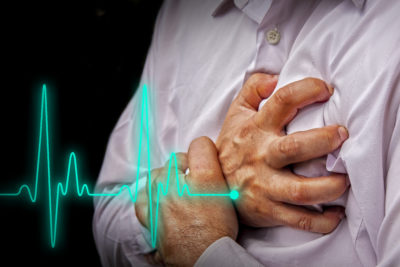The odds of surviving a heart attack have increased significantly over the past several decade, due to several factors.
Some measures include medications and high tech interventions, while others involve lifestyle changes which you can implement at home. Let’s begin by looking at beneficial herbs.
Consider The Benefits Of Herbs
Herbs such as hawthorn and motherwort are excellent for the circulation. If you prefer to avoid medications which reduce cholesterol levels, consider using herbs to lower unhealthy levels of cholesterol. Herbs are effective, yet they do not deplete the body of coenzyme Q10, which pharmaceutical cholesterol lowering agents do. If you take medications to lower cholesterol, be sure to take a coenzyme Q10 supplement daily, as low levels of coenzyme Q10 may result in muscle pains, including pain in the heart muscle.
Two well-respected, large studies recently revealed that increasing fiber may prolong life after a heart attack by approximately nine years. Several studies indicate that fiber from grains is the most effective. While fiber and other nutrients from fruits and vegetables are healthy, the fiber in cereal is the type that results in increased longevity. Scientists do not understand the specific compound or mechanism behind these findings.
The Hidden Secrets Of Making Herbal Medicines…Right At Your Fingertips!
Much of the fiber contained in grains and cereals is soluble fiber. Soluble fiber lowers levels of unhealthy cholesterol and absorbs toxins from the body. This may be what makes fiber from grains and cereal effective.
Sadly, less than five percent of Americans consume the minimum recommended amounts of fiber each day. Women should consume a minimum of 25 grams each day. Men should aim for at least 38 grams daily.
Researchers found that for every 10 grams of fiber consumed, the risk of death decreased by 15 percent. They also discovered that people who ate the highest amounts of fiber reduced their risk of death by 25 percent over a nine-year period.
If you have not had a heart attack, incorporate lifestyle measures into your repertoire to decrease the likelihood of you having one. If you have suffered a heart attack, there is much that you can do to increase your level of wellness and improve your chances of living a long, healthy life.
Immediate Care During and After a Heart Attack
Women sometimes display different symptoms of a heart attack than do men. With more women being knowledgeable about the signs of a heart attack, they are more likely to seek emergency care quicker in the event that a heart attack occurs. Prompt treatment leads to better outcomes.
The administration of medications, known as beta blockers, after a heart attack improves survival chances. After the heart attack occurs, a person takes beta blockers for the rest of their life.
Management of Cardiac Arrest
Changes in protocols to manage cardiac arrest have been in place since 2011. In 2011 the American Heart Association updated its guidelines for performing CPR, as it was determined that the administration of high quality, rapid chest compressions resulted in better outcomes.
Instead of the decades-old sequence of rescuers opening an airway, providing artificial respiration, and then beginning chest compressions, the recommendations changed to only administering compressions. Amazingly, the new technique increased survival rates by 300 percent. Make sure your family member and friends are aware of the new method – and are trained to perform it.
“In out-of-hospital cardiac arrest, the brain and the heart need resuscitation, not the lungs,” said Gordon A. Ewy, director of the University of Arizona Sarver Heart Center.
THIS POWERFUL SUPPLEMENT IS NOT FOR EVERYBODY!
“When you stop chest compressions to give mouth-to-mouth ventilations, no blood is moved and the organs essentially are starved. In fact, during CPR, blood flow to the brain and the organs is so poor that stopping chest compression for any reason – including so called ‘rescue breathing’ – is not helpful.”
Also, the availability of defibrillators has afforded people rapid treatment.
Until the 1990s, most people who developed cardiogenic shock after having a heart attack died. Cardiogenic shock is a life-threatening condition which sometimes results due to weakened, injured tissues of the heart. The heart is too weak to pump blood effectively to the rest of the tissues in the body. Fluid may build up in the lungs. Organs, such as the kidneys, are susceptible to injury. Advances in technology and aggressive treatments have improved survival rates of people who develop cardiogenic shock.
Prevention of Heart Attacks
Increased screening and advances in diagnostic technology help identify risks for heart attack so that early interventions can be implemented. Links between risk factors for heart attacks, obesity and diabetes have been identified.
Blood tests which measure levels of C-reactive protein, cholesterol and triglyceride levels give clues regarding inflammation and imbalances of fat. Other tests, including the measurements of fibrinogen, Lipoprotein (a), and brain natriuretic peptides are sometimes used in conjunction with other tests to evaluate heart attack risks.
Medications and lifestyle interventions, such as weight loss, exercise and decreasing the intake of unhealthy fats, improve cardiovascular health. Obtaining good control of blood sugar levels among diabetics reduces the risk of heart disease.
What are your all-natural ways to lower your heart attack risk? Share them in the section below:
 Off The Grid News Better Ideas For Off The Grid Living
Off The Grid News Better Ideas For Off The Grid Living




